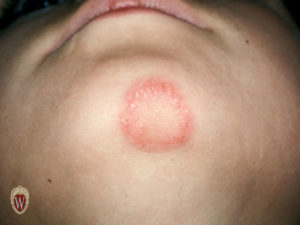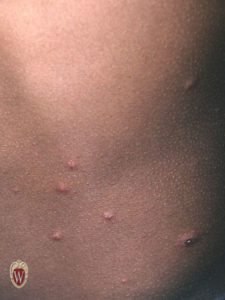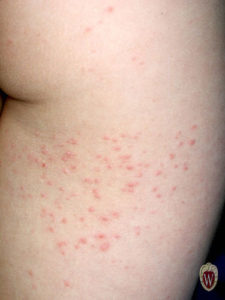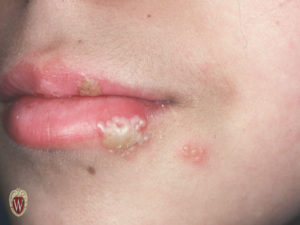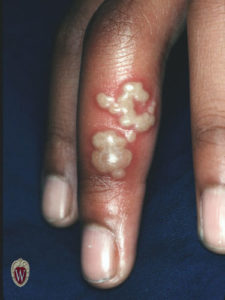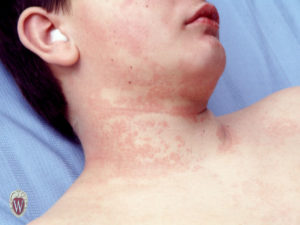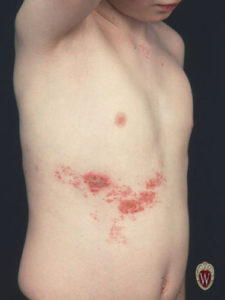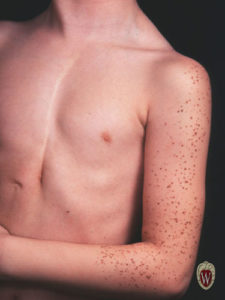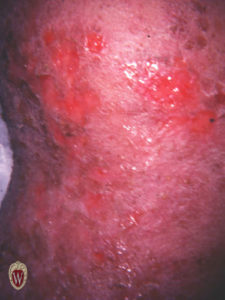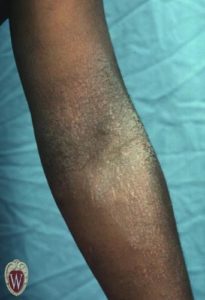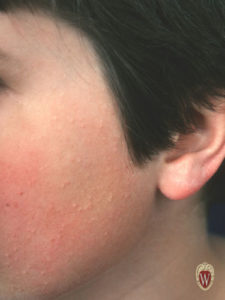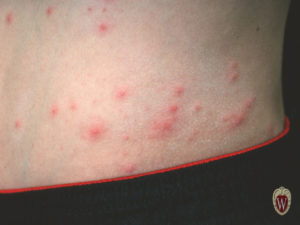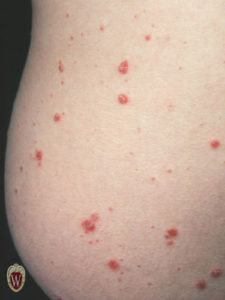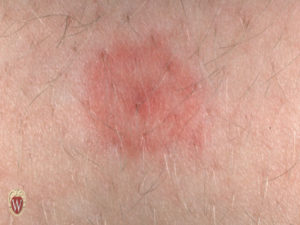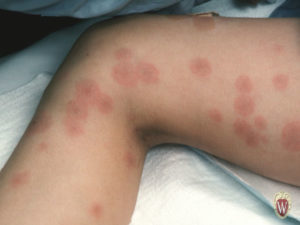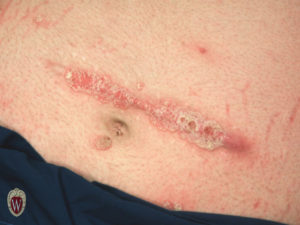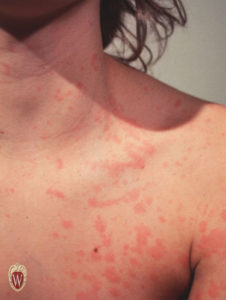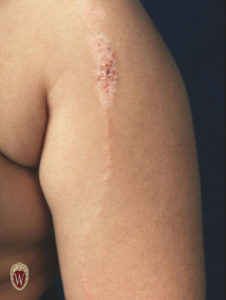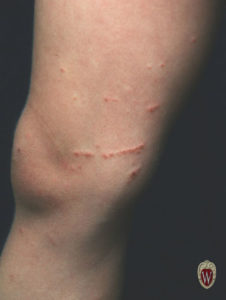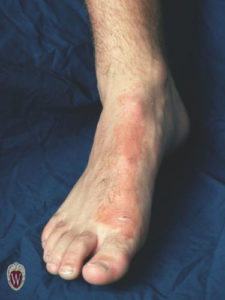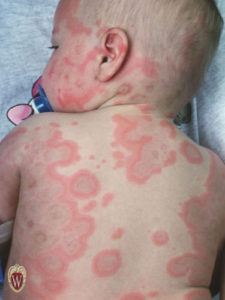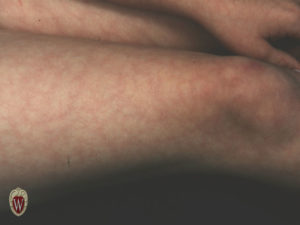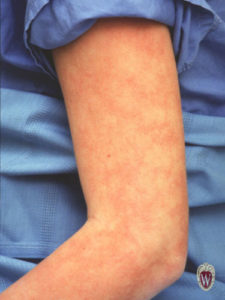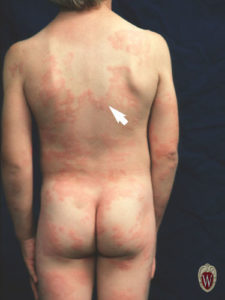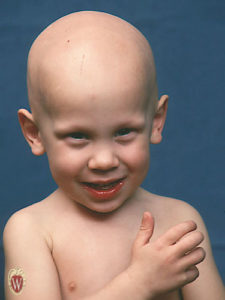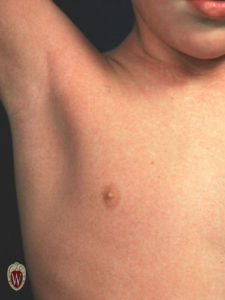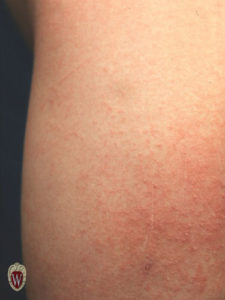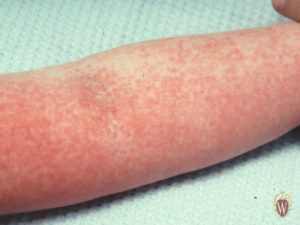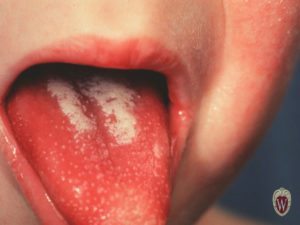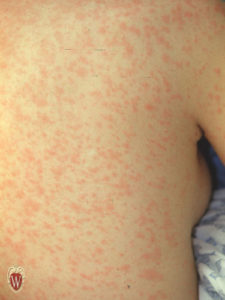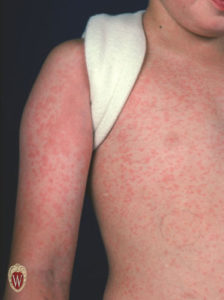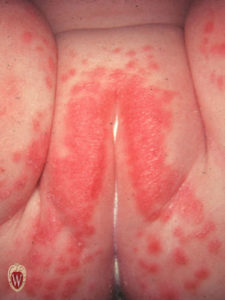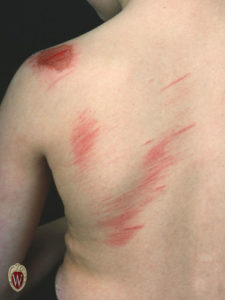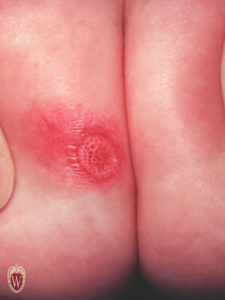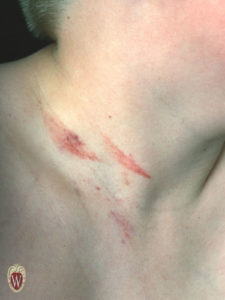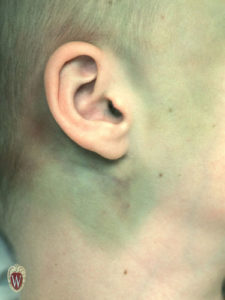Not only is the appearance of lesions important, but the pattern and distribution on the skin is as well.
Click any of the images below to view them in a higher resolution.
This is an accordion element with a series of buttons that open and close related content panels.
Annular
Discrete
Clustered
Clustered lesions are those that are grouped together. They are commonly seen in herpes simplex or with insect bites, for example.
|
|
|
Confluent
Confluent lesions tend to run together.
|
|
|
|
|
Dermatomal/Zosteriform
Dermatomal, zosteriform lesions follow a dermatome. The lesions of varicella zoster (also known as shingles) are the classic example, but there are other lesions that may assume the same pattern.
|
|
|
Eczematoid
Follicular
It is sometimes helpful to determine if lesions specifically involve the hair follicle.
Guttate
Iris or Target
Koebner Phenomenon
The Koebner phenomenon, also called the isomorphic response, refers to the appearance of lesions along a site of injury. This phenomenon is seen in a variety of conditions; for example, lichen planus, warts, molluscum contagiosum, psoriasis, lichen nitidus, and the systemic form of juvenile rheumatoid arthritis.
Linear
Linear lesions occur in a line or band-like configuration. This descriptive term may apply to a wide variety of disorders. (One should be certain that the lesions are not following a dermatome.)
|
|
Multiform
Reticular
Reticular or net-like lesions can be seen in a variety of circumstances; e.g., very commonly in newborns (or even grown children and adults) as cutis marmorata, or with livedo reticularis. The former fades as the skin is warmed the latter becomes more florid.
|
|
Serpiginous
Universalis
Scarlatiniform
Scarlatiniform rashes have the pattern of scarlet fever. The patient with a scarlatiniform rash has innumerable small red papules that are widely and diffusely distributed. Note that the term scarlatiniform does not mean that the patient has scarlet fever, although by definition all patients with scarlet fever have a scarlatiniform rash. Patients with a variety of other conditions such as Kawasaki disease, viral infections, or drug reactions may have rashes with the same pattern.
|
|
|
|
|
Strawberry Tongue
Patients with scarlet fever, Kawasaki disease or other conditions may develop a distinctive appearance of their tongues. Because of its resemblance to the well-known berry, the appearance is called “strawberry tongue.” Since this eruption is on a mucus membrane, it is called an enanthem.
|
|
Morbilliform
The term “morbilliform” means that the patient has a rash that looks like measles. Patients with measles will have the rash but patients with Kawasaki disease, drug reactions, or other conditions may also have a morbilliform rash. The rash consists of macular lesions that are red and are usually 2-10 mm in diameter but may be confluent in places.
Satellite
Patterns of Intentional or Unintentional Injury
One important category of skin lesions involve the form that skin lesions may take in cases of child abuse or other intentional injury (bite marks, slap marks, strap marks, burns, etc.) or in cases of unintentional injury. Abrasions are traumatically caused erosions.
